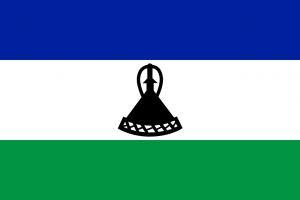Language/Southern-sotho/Culture/Family-Structure
| ◀️ Money and Currency — Previous Lesson | Next Lesson — Marriage and Ceremonies ▶️ |
Welcome to our lesson on Southern Sotho Family Structure! In this lesson, we will explore the vital role that family plays in Southern Sotho culture, understanding the various family roles, the importance of extended family, and the deep kinship ties that bind people together in this vibrant society.
Family is the cornerstone of Southern Sotho life, and understanding this structure will not only enhance your language skills but also give you valuable insights into the Southern Sotho way of life. As we delve into this topic, keep in mind that family dynamics can vary widely, but there are common threads that unite Southern Sotho families.
In this lesson, we will cover:
- The traditional family structure
- Roles of family members
- The significance of extended family and kinship ties
- Examples of family terms in Southern Sotho
- Exercises to practice what you've learned
Traditional Family Structure
In Southern Sotho culture, the family structure is often hierarchical and based on respect and responsibility. Families generally consist of several members, including immediate family and extended family.
Immediate Family
The immediate family typically includes:
- Parents (batho ba borai) - The father and mother.
- Children (bana) - Sons and daughters.
- Siblings (bana ba bo-ralofi) - Brothers and sisters.
Extended Family
The extended family is crucial in Southern Sotho culture and includes:
- Grandparents (borai) - Grandfathers and grandmothers.
- Aunts and Uncles (bana ba borai) - Aunts and uncles from both sides of the family.
- Cousins (motsoalle) - Children of aunts and uncles.
- In-laws (bana ba lefa) - Family members related through marriage.
The extended family plays a significant role in social support, childcare, and cultural continuity.
Roles of Family Members
Each family member has a specific role and responsibility within the family structure. Understanding these roles will help you appreciate the dynamics of Southern Sotho families.
Father's Role
The father (ntate) is often seen as the protector and provider of the family. His responsibilities include:
- Providing for the family financially.
- Making important decisions regarding family matters.
- Offering guidance and support to children.
Mother's Role
The mother (mama) plays a crucial nurturing role. Her responsibilities include:
- Caring for the household and children.
- Instilling values and traditions in her children.
- Supporting her husband in family decisions.
Children's Roles
Children have their own responsibilities, which may include:
- Assisting with household chores.
- Respecting and obeying their parents.
- Learning family traditions and cultural practices.
Importance of Kinship Ties
Kinship ties are fundamental in Southern Sotho culture. They create a sense of belonging and community. Families often gather for important events, celebrations, and rituals.
Cultural Practices
- Ceremonies: Family ceremonies such as weddings and funerals are significant, bringing together extended family members.
- Support Networks: Families form support networks, helping each other during times of need.
- Cultural Transmission: Elders pass down cultural practices and stories to younger generations, ensuring the preservation of Southern Sotho heritage.
Examples of Family Terms
To help you get familiar with the vocabulary, here are some examples of family terms in Southern Sotho:
| Southern Sotho | Pronunciation | English |
|---|---|---|
| ntate | [nˈtate] | father |
| mama | [mˈama] | mother |
| bana | [ˈbana] | children |
| borai | [bɔˈrai] | grandparents |
| bana ba borai | [ˈbana ba bɔˈrai] | aunts and uncles |
| motsoalle | [mɔˈtsoalle] | cousin |
| bana ba lefa | [ˈbana ba lɛˈfa] | in-laws |
Exercises and Practice Scenarios
Now that we've covered the family structure in Southern Sotho culture, it's time for some exercises to solidify your understanding.
Exercise 1: Vocabulary Match
Match the Southern Sotho term with its English translation.
1. ntate
2. mama
3. bana
4. borai
5. motsoalle
Answers:
1. Father
2. Mother
3. Children
4. Grandparents
5. Cousin
Exercise 2: Fill in the Blanks
Fill in the blanks with the correct family member title.
1. My _____ (father) is a teacher.
2. My _____ (mother) is a nurse.
3. My _____ (sister) loves to sing.
Answers:
1. ntate
2. mama
3. hlaudi
Exercise 3: Identify the Family Role
Read the sentences and identify the family role being described.
1. She takes care of the house and children. (Answer: mother)
2. He provides for the family financially. (Answer: father)
Exercise 4: Create a Family Tree
Draw your family tree and label each member using the Southern Sotho terms.
Exercise 5: Kinship Ties Discussion
Discuss with a partner the importance of kinship ties in Southern Sotho culture.
Exercise 6: Sentence Construction
Construct a sentence using the following words: "mother", "cooking", and "delicious".
Example Answer:
Mama o pheha dijo tse monate. (Mother cooks delicious food.)
Exercise 7: Listening Comprehension
Listen to a Southern Sotho speaker describe their family and answer the following questions:
1. How many siblings do they have?
2. What are their parents' names?
Exercise 8: Role Play
Pair up and role-play a family gathering, using the vocabulary learned in this lesson.
Exercise 9: True or False
Read the statements and determine if they are true or false.
1. The mother is responsible for providing for the family. (False)
2. Extended family is important in Southern Sotho culture. (True)
Exercise 10: Reflection
Write a short paragraph reflecting on what you learned about Southern Sotho family structure and its significance.
Congratulations on completing this lesson! We hope you now have a deeper understanding of the Southern Sotho family structure and the roles within it. The bonds of family are strong in Southern Sotho culture, and appreciating these ties will enrich your experience as you continue to learn the language and culture.
Other Lessons
| ◀️ Money and Currency — Previous Lesson | Next Lesson — Marriage and Ceremonies ▶️ |

